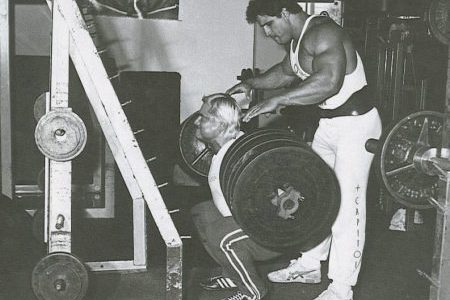Here is a piece Tom did for Iron Life – Link to site HERE
Tom Hamilton was the World Drug Free Powerlifting Federation champion in 2016, with a 665kg total in the 82.5kg weight category – including a 242kg squat. He works out of W10 Performance in London
There are dozens of programmes promising to add weight to your squat. Lots of them work: some of them better than others. But the best way to make instant gains – as well as to set yourself up for future success – is to fix any technical issues with your squat before you go any further. Powerlifters spend a lot of time squatting, and because we’re always trying to add weight, we’ll spend almost as long ensuring that our technique’s as efficient as possible – but whether you want to step on the platform or not, you can make gains by doing the same. Here’s how to break down your squat, and make improvements today.
High or low?
First of all, most obviously, look at your bar position. Typically most people are going to be stronger low bar squatting: it’s less distance for the bar to travel and the position’s more favourable on the body. There will be exceptions – there are plenty of Oly guys who squat more high bar – but unless you’ve tried both, you won’t know. For someone who’s always high bar squatted, what I’d recommend is to move the bar down gradually: maybe an inch, an inch or two at a time. If you go straight to a position where the bar’s resting across the scapula it can throw you completely off and you’re likely to lift a lot less weight. Aim to shift into the new movement over, say, an eight-week period to give yourself time to adapt to the new movement pattern.
Keep a straight path
From a technical point of view you want to make sure the bar path’s good: it wants to be straight up and down. Film yourself, or get a trusted friend to watch what you’re doing – some apps will actually let you trace the bar path. If it sn’t straight, there are two things likely to be happening.
Firstly, If you’re low bar squatting particularly, the hips might be shooting up from the bottom so it looks like a good morning. You’ll see this happen with taller lifters or people with slightly longer torsos. If it’s more of a technical issue and not down to the individual person, it might be a quad weakness, so you might want to add in safety bar squats or high bar squats or front squats. Something I’ll sometimes include in a programme is high bar and low bar squats, even if you’re planning to compete using the latter. If, say, you’re squatting twice a week, twelve weeks out, one session might be high bar and one low bar for four weeks – then I might transition into two low-bar sessions a week. The last four weeks would all be specific competition-style squatting. I’d still train the competition lifts heavier: the repetition day, which could be multiples of five or three sets of eight would be a high-bar squat session. Paused squats also work: add them as an accessory exercise.
Falling forward is the other common problem. This is likely to be a technical issue, and you can fix it with good queueing. Think about driving your upper back into the bar, and experiment with changing where you’re looking – some people coach keeping a neutral head position and looking down at the ground, but when I do that, I found I was falling forward all the time.
Stay tight
You really can’t have a strong enough upper back for the squat. Keep it tight, keep the shoulder blades squeezed. I like rows more than pull-ups as an assistance exercise for back tightness, because they have more carryover to deadlift and bench as well. I especially like a chest supported row – it takes the lower back out of the movement so you can train it quite often. The problem with barbell rows, your lower back’s often fatigued before the other back muscles come into play. Face pulls, pull-ups and pull-downs are also worth trying, but horizontal pulls will give you more bang for your buck.
Find your foot position
Personally, I never teach the squat with toes forward: it doesn’t open up your hips. Anywhere from 10-30˚ of external rotation will work: you find it’s a lot more comfortable to hit depth, because you’re already externally rotated, and the glutes are switched on ready to go. It’s a much more comfortable position. The exception would be a client that’s penguin-footed already, when I’ll have to work on getting them to turn their feet in – but you’ll already know if that’s you.
Ultimately, fixing your squat takes time and patience, and you might have to keep your ego in check while your top-end weights suffer as you switch to a more efficient style. But in the long run you’ll benefit from technique that’s better, safer, and allows you to move more weight.

Recent Comments